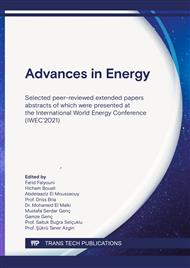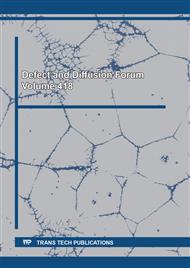p.3
p.11
p.25
p.39
p.53
p.67
p.79
p.89
p.99
First-Principle Study of the Thermodynamic Properties of VSb2 Compound as a Function of Pressure and Temperature
Abstract:
In our paper, we interested in the study of the thermodynamic properties of the compound VSb2. For this, we used the full potential linearized augmented plane wave (FP-LAPW) method implemented in the Wien2k code. The latter is based on the density functional theory (DFT). We also used the Quasi-Harmonic Debye model implemented in the Gibbs2 code. The exchange-correlation energy of electrons was treated using the generalized gradient approximation (GGA) parameterized by Perdew-Burke and Ernzerhof. The calculation of the pressure and the temperature dependence of the thermodynamic properties of VSb2 material is obtained from that of the electronic structure, within the framework of the Quasi-Harmonic Approximation (QHA). We selected a volumes grid enclosing the equilibrium geometry. At these fixed volumes, the rest of the structural parameters are relaxed and we obtain the energy curve as a function of the volume E(V). The thermodynamic properties such as the primitive cell volume V(Bohr3), the bulk modulus B (GPa), the heat capacities CV(J.mol-1.K-1) and CP(J.mol-1.K-1), the thermal expansion coefficient α (K-1), the Grüneisen parameter γ, and the Debye temperature θD(K) have been studied depending on the temperature (T) in the range [0 ; 500 K], and the pressure (P) in the interval [0 ; 15 GPa]. The increase of the bulk modulus is in agreement with the decrease of the volume, also the volume of the primitive cell and bulk modulus are more sensitive to pressure than to temperature. The thermal expansion is more sensitive at low temperatures than at high temperatures. A specific heat behavior of was found, with a Dulong-Petit limit value of 48.16 J.mol-1.K-1. The effect of the pressure on the Grüneisen parameter is opposite to Debye temperature.
Info:
Periodical:
Pages:
3-9
Citation:
Online since:
August 2022
Authors:
Keywords:
Price:
Сopyright:
© 2022 Trans Tech Publications Ltd. All Rights Reserved
Share:
Citation:



